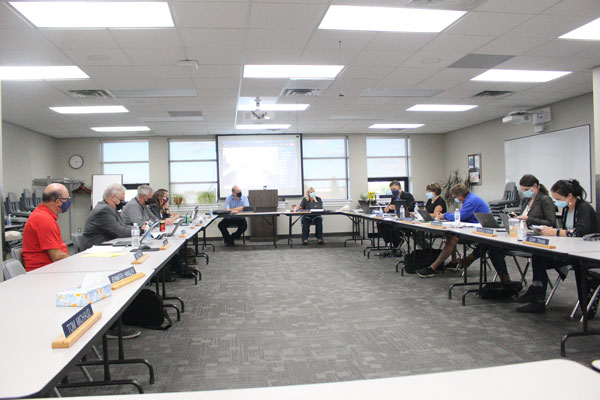
The Saskatchewan Rivers School Division passed a balanced 2022-203 budget without having to make staffing cuts like they did last year, or like other divisions have in the province.
The board of education passed their budget at their second last regular meeting of the school year on Monday, June 6. Chief Financial Officer Jerrold Pidborochynski presented the budget during Monday’s school board meeting.
Grants played a big part in keeping the school division on track. They account for roughly 86 per cent of the division’s revenue.
“Sask Rivers board were pleased to be able to deliver a budget that maintains our school system with no reduction in staffing and in fact this year we have added staff in areas like mental health and literacy,” board chair Barry Hollick said. “We are very pleased to go forward with no cuts to staff.
“We have some concerns but we are looking forward to a good year, maintaining our staff and adding in some areas,” he added. “Overall we think that we have presented a very responsible budget that’s going to serve our population well in Sask Rivers.”
The division’s funding from the provincial government increased by roughly $6,432,983 this budget year. The total grants from the Ministry of Education to Saskatchewan school boards increased from $90,672,308 in 2021-2022 to $97,105,291 in 2022-2023.
With an increase in enrollment projections for the school year, the division saw more grant money than before.
Hollick said last year they had a higher enrolment increase than expected. The board expects a similar enrolment increase this upcoming school year, which helped them obtain more grant funding.
Hollick added that the division was able to balance the budget by dipping into reserves, something other school division didn’t have the luxury of doing.
“I think you probably read some of the stories in the province this year about the number of school divisions who are having to cut staff and costs for services they just can no longer afford because these boards have exhausted their financial reserves,” Hollick said. “Because we no longer set the local mill rate for education, they have no access to funds to maintain what they have been providing as educational services in the past. The only thing they could do is borrow money but that would have to be paid out down the line.”
The school division used roughly $2.2-million in reserves to help balance the budget. That reserve has been developed of the life of the school division.
“Some school boards are having to make cuts because they don’t have those reserves, but Sask Rivers does have reserves,” Hollick said.
Hollick added that it’s not sustainable to keep using reserves to cover funding shortfalls.
“We are fortunate that due to careful planning and previous cuts made that didn’t impact classrooms, we have been able to offer our programs with no reductions and no cuts,” he said. “This is not a sustainable solution as I said because once reserves have been exhausted, school divisions are then faced with making cuts.”
The division’s federal grant remained steady at $21,300. Other provincial grants remained the same at $294,180.
Governance spending increased from $4597,962 in 2021-2022 to $518,2014 in 2022-2023.
Building operating expenses went up from $6,879604 in 2021-2022 to $7,424,483.
Instructional salaries and benefits increased from $54,175,020 in 2021-2022 to $56,487,251 in 2022-2023.
Hollick said that when the provincial budget was presented in the spring, the education portion was below expectations.
“They failed to provide funding for costs that were unrelated to teachers’ salaries,” he explained. “They certainly met their obligations with the contract they had negotiated with the teachers, but that always doesn’t cover all of the costs that we have with teacher’s salaries.
“It didn’t take into considerations of other staff salary increases like when teachers get an increase of course you give increases to CUPE and your admin staff, your secretarial help, so it didn’t provide money there.”
Total program support, which includes things like teacher assistant and clerical salaries, was $14,060,493 in 2021-2022. Sask. Rivers budget documents show that total increasing to $14,649,622 in 2022-2023.
The province also announced at budget time a new $7 million fund that will allow school divisions to hire up to 200 additional, full-time educational assistants to support students and manage increasingly diverse classrooms.
Hollick explained that after dividing among school divisions, Sask Rivers could see seven or eight additional staff.
“Certainly we welcome that, but they didn’t indicate if that’s going to be sustained,” Hollick said. “When we hire EAs (educational assistants) this year, is there going to be funding to continue their positions next year or is that something, again that we would absorb?”
Total revenues increased from $110,145,161 to $113,077,671 over last year. Total expenditures also increased from $110,145,161 in 2021-2022 to $113,077, 671 in 2022-2023.
michael.oleksyn@paherald.sk.ca

